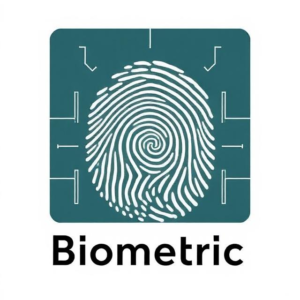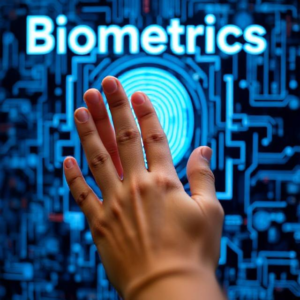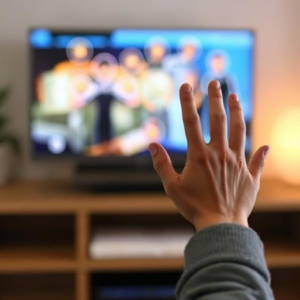What are Biometric Sensors?
Biometric sensors are devices that measure unique characteristics of a person, like their fingerprints, face, iris, voice, or even their heartbeat, to identify or verify who they are. These sensors help systems (like phones or security systems) recognize and authenticate people without needing passwords or cards.

How do they work?
- Sensing: The sensor first captures some sort of physical feature. For example, a fingerprint sensor scans your fingerprint, or a facial recognition sensor takes a picture of your face.
- Processing: After the sensor captures the data, the system processes it. The data is turned into a numerical template (kind of like a digital “map” or “pattern” of your feature). This makes it easier to store and compare later.
- Matching: When you try to use a biometric system, the system compares your new scan (e.g., your fingerprint) with the stored data (your fingerprint template) to see if they match. If it matches, you’re granted access.
Types of Biometric Sensors
- Fingerprint Sensors: These sensors scan the ridges and valleys of your fingerprint. Since everyone’s fingerprint is unique, it’s a reliable way to identify someone.
- Face Recognition Sensors: These sensors analyze the unique features of your face, like the distance between your eyes, nose, and mouth. It can identify you from a photo or a camera feed.
- Iris Scanners: These sensors capture the patterns in the colored part of your eye (the iris). The patterns are unique for every person, even twins!
- Voice Recognition Sensors: These sensors analyze the unique sounds and patterns in your voice, such as pitch, tone, and rhythm.
- Palm or Vein Scanners: Some sensors scan the patterns in your palm or veins to identify you, which is harder to fake than a fingerprint.
Why are they useful?
- Security: Since biometric features are unique to each person, they make it harder for someone to impersonate you.
- Convenience: You don’t have to remember passwords or carry cards. Just use your fingerprint, face, or voice.
- Accuracy: Biometric systems are often very accurate, which helps in preventing unauthorized access.
Where are they used?
- Phones and Laptops: Many devices use fingerprint or face recognition to unlock.
- Security Systems: Biometric sensors are used to secure buildings or restricted areas.
- Banks: Some banks use fingerprint or voice recognition to authorize transactions.
- Airports: Facial recognition is used for faster check-ins and security screenings.
Downsides to Consider
- Privacy concerns: If someone steals your biometric data, it could be very hard to change, unlike passwords.
- Cost: Biometric systems can be expensive to install and maintain.
- Accuracy issues: Sometimes, sensors might not work perfectly if your fingerprint is too dry or your face is blocked (e.g., wearing a mask).
biometric sensors are a cool and secure way of recognizing you based on things that are unique to your body, making life easier and more secure!











